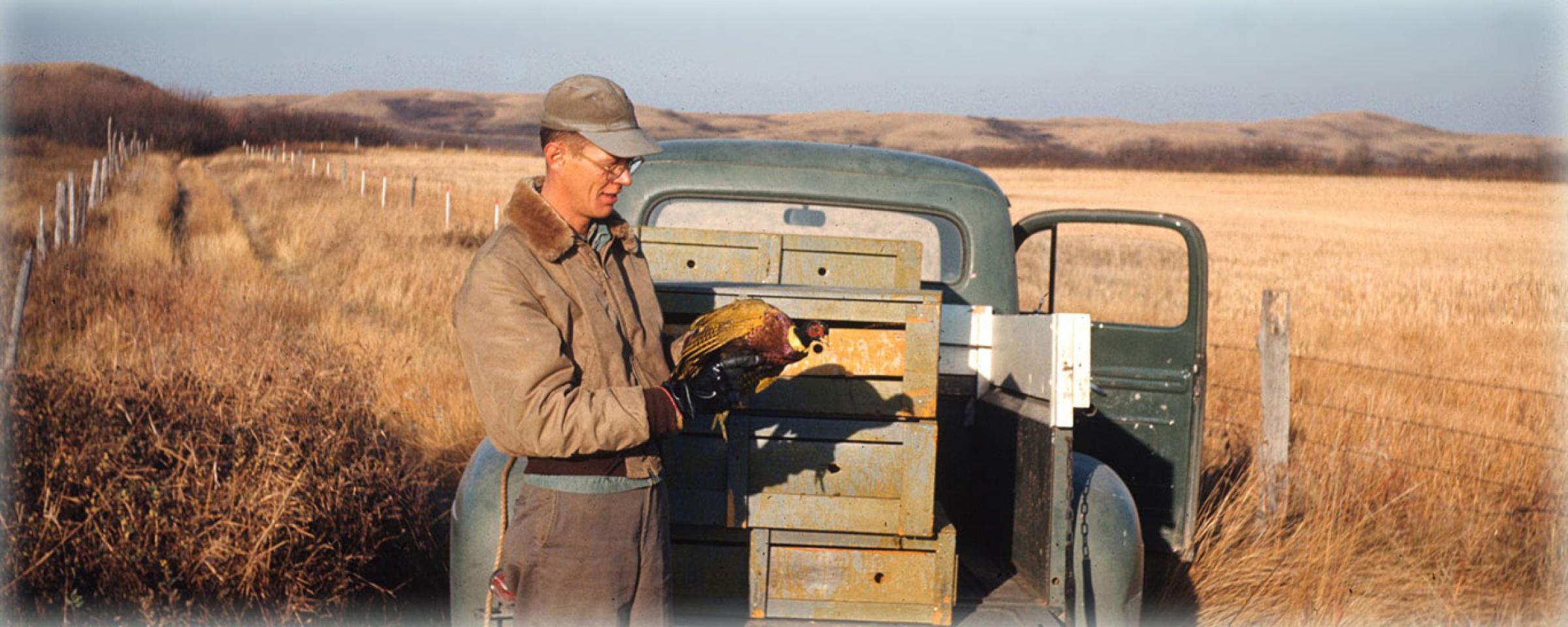
A Look Back
Ring-necked pheasant roosters are as gaudy as a circus clown. To add color to these nonnative birds seems altogether unnecessary.
Yet, in the 1950s, that’s exactly what North Dakota Game and Fish Department biologists did to a number of pheasants, including the much more drab hens, for research purposes.
“Any person wandering across a brood of red, green, blue or purple baby pheasants might very well stop and try to remember just what he had been doing the night before ... Yet a visitor to the Spiritwood game farm near Jamestown could have witnessed such a bizarre sight last summer for our Department biologists were experimenting with dyes on both adult and baby pheasants,” from North Dakota OUTDOORS, November 1950.
Department personnel injected green, blue, scarlet and purple dyes into 227 pheasant eggs from a hatchery when the birds were in the embryo stage of development.
“It was necessary to experiment to determine the best dose for each dye, taking into consideration depth of color and mortality,” from OUTDOORS, November 1950.
Nearly 100 of the eggs hatched. The colored birds, which would look noticeably different from other ring-necked pheasants, would allow biologists to study movements of broods, mortality of young birds and feeding habits.
The colors, biologists reported in OUTDOORS, were visible on the birds for about 42 days. At that age, the birds were colored only about the head, but the colors were still bright enough to be viewed with binoculars from about 50 yards.
Biologists also studied the effect of dyes on adult birds. Ten roosters and 100 hens were dyed with red, blue, green and yellow colors. The dyes were applied with scrub brushes and sponges.
It was reported that red was the most resistant to fading, followed by blue, green and yellow.
“For all practical purposes it is believed that birds colored by the methods used in this experiment could be identified for at least a six-week period in the field under normal conditions,” from OUTDOORS, November 1950. “Such colored birds on their natural range will help biologists study the movement of pheasants during winter months and in the breeding season and learn other important information about this valuable game bird.”
Back in the day, wildlife biologists tried different research techniques to see what would work, what would aid in the management of North Dakota’s wildlife. Dyeing pheasants, both young and old, was one of them.
